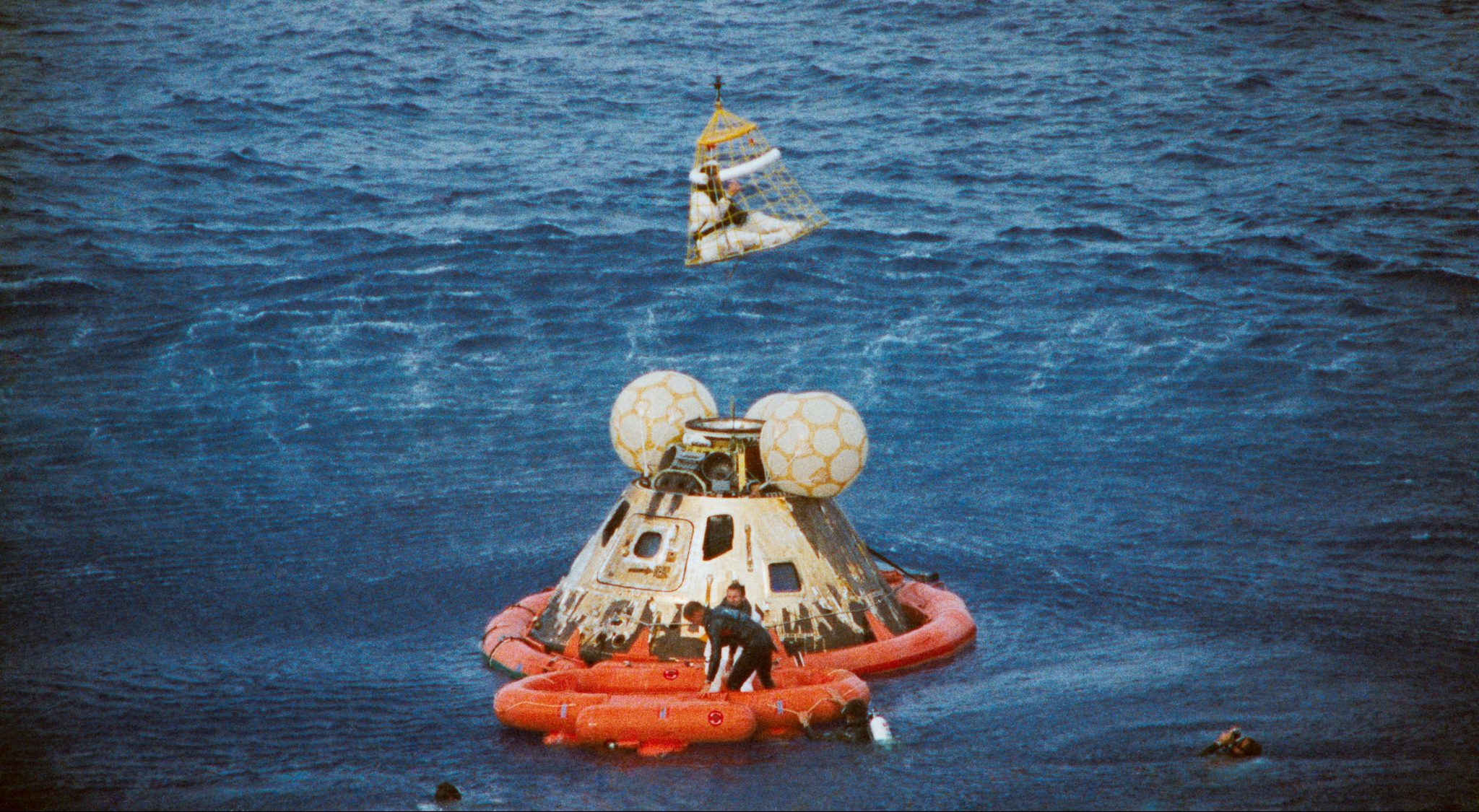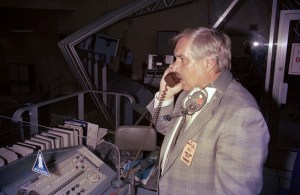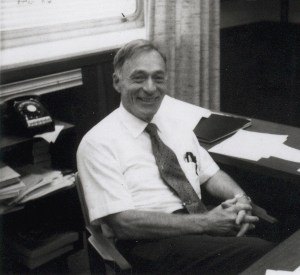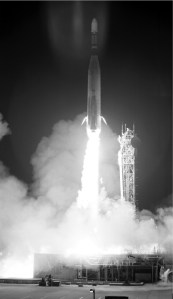At 1:07PM on Friday April 17, 1970, the Apollo 13 capsule splashed down into the Pacific Ocean less than a mile from the waiting rescue crews. A combination of relief and joy swept over a small team of engineers at NASA’s Lewis Research Center (now Glenn) listening in on the direct audio feed between the crew and Houston, as well as the clusters of other employees gathered around transistor radios. Astronauts James Lovell, John Swigert and Fred Haise (a former Lewis research pilot) were safe after a harrowing four-day ordeal.
NASA immediately set out to determine the cause of the accident. On April 12, 1970 Apollo 13 was one day into its journey to the Moon, when at 9:08 p.m. the crew felt a jolt. One of the service module’s oxygen tanks exploded.
The explosion crippled the module, leaving it without its oxygen supply, power, water and propulsion. The astronauts crammed into the attached Lunar Module as NASA engineers devised a series of unique measures to maneuver it back to Earth.
Edgar Cortright, a former Lewis engineer, led the Apollo 13 investigation. He summoned Lewis safety expert Irving Pinkel to serve as an official observer. Pinkel had spearheaded the center’s Crash Fire Program in the 1940s and 1950s and was a key investigator for the Apollo 1 fire. Other Lewis contributors included Seymour Himmel, Edward Baehr and William Brown.
The investigators speculated that a short circuit caused the coated wires inside the oxygen tank to burn, which resulted in an explosion. NASA engineers had previously believed the coating, with its 620.6 F melting point, would not combust in the vacuum of space.
In mid-May Lewis’ Space Environment Branch carried out a series of drop tests at the Zero Gravity Facility to explore this theory. A combustion chamber was installed in the test capsule to replicate the pressurized oxygen environment in the Apollo oxygen tanks.
The researchers performed eight drops using three different types of wire bundles, with and without conduit. They compared combustion in ambient conditions to that in microgravity and found that the wire coating did burn in a space environment, although at a lesser rate than in Earth atmosphere.
On May 28, 1970, Pinkel submitted his recommendations to the investigation board. These included separating the wires so that the flame from one would not ignite others, placing ceramic washers around the wire that would stop flame travel, bundling the wires in conduit with flame retardant fittings at the ends and the testing of the systems in worst-case scenario conditions.
The investigation board released its 914-page report on June 15, 1970 and appeared before Congress two weeks later. The inquiry led to more than a dozen modifications to the Apollo spacecraft, including replacing the insulation with steel conduits. Cortright thanked Pinkel afterwards, “Your dedicated participation was instrumental in bringing our work to a satisfactory conclusion in a relatively brief time span.”
Robert S. Arrighi
NASA’s Glenn Research Center
































